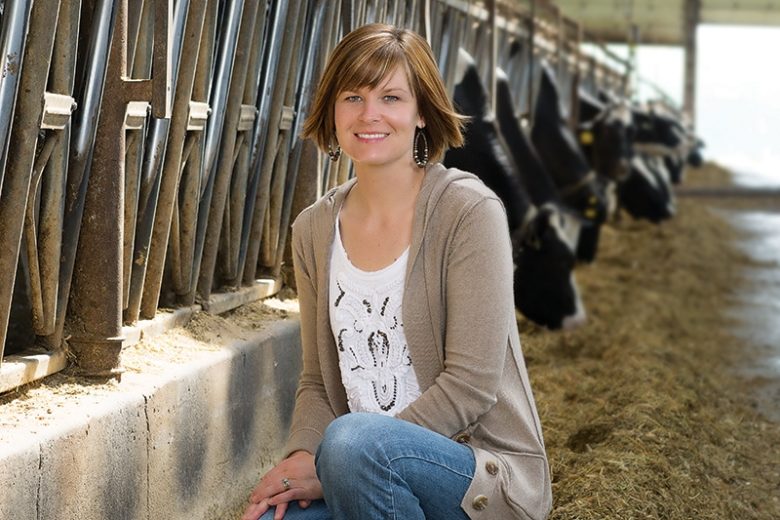
Sarah Kuehnert, RDN, LD, CD, is a registered dietitian, but she also dons another hat — that of dairy farmer. It’s a role that comes naturally to her.
Having been raised on her family’s dairy farm, she married Nathan Kuehnert and became part of the six-generation Kuehnert Dairy Farm, established in Fort Wayne, Ind., in the 1890s. It’s immediately clear that the role of family is a big deal to the Kuehnerts, but not just their own. Last fall, they ventured into the world of agritourism, hosting a Kuehnert Dairy Fall Festival. “It has created a totally different type of venue for families to grow, learn and create family traditions,” Kuehnert says. “It is a joy to see children playing and interacting with their parents and grandparents while enjoying the festival.”
The farm is also accessible on a daily basis through school field trips and group tours. “It is our passion to share our farm, family and cows,” she says. “We want consumers to see what life is like as a dairy farm, how we care for our cows and the land so that they know that milk comes from a cow, how a gallon of milk gets to the grocery store, and to know the importance of milk in a healthy diet.”
What led to your career in nutrition and dietetics?
I was born and raised on a dairy farm where my family worked hard every day to produce nutritious food to help feed the world. Knowing the everyday struggles and commitment it takes to produce food and then seeing what high quality nutritious food does for the human body, I knew I wanted to be involved in teaching others about good nutrition.
Tell us about your work and how it fulfills a need in your community.
As a dairy farmer, registered dietitian and a mother, I know how important it is to get at least three servings of dairy each and every day. It all starts with milk! We drink it, we use it as an ingredient, and we make a lot of other products from it. I believe it is important for people to know the importance of milk in their daily lives. One 8-ounce glass of milk provides these minimum daily allowances: 30 percent calcium, 25 percent vitamin D, 24 percent riboflavin, 16 percent protein, 13 percent vitamin B12, 11 percent potassium, 10 percent vitamin A and 10 percent niacin.
How has your work made a difference in your community?
Opening our farm up to the community has helped to build consumer confidence in locally grown and produced foods. As producers, it is our responsibility to share how our practices are safe and environmentally conscious, and that we are being good stewards of what we have. We continually look for ways to improve our daily practices that make economic sense, such as reducing energy, reusing water, recycling expired produce to feed the cows, and using manure as a natural fertilizer for our crops.
What kind of feedback have you received?
People just love to visit the farm, interact with the cows, see where they sleep and what they eat. People are intrigued by the strict quality control parameters that are in place to ensure the freshness, purity and great taste of milk.
What do you find most rewarding about your efforts?
As a clinical dietitian caring for critically ill patients, I see the rebuilding good nutrition does for the human body. It is my goal to make a difference in how people view food. It is so rewarding to hear people of all ages express their gratitude to us for sharing our cows and farm with them.
